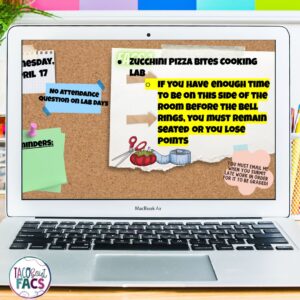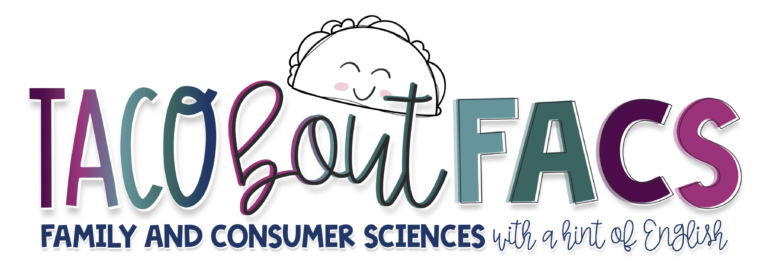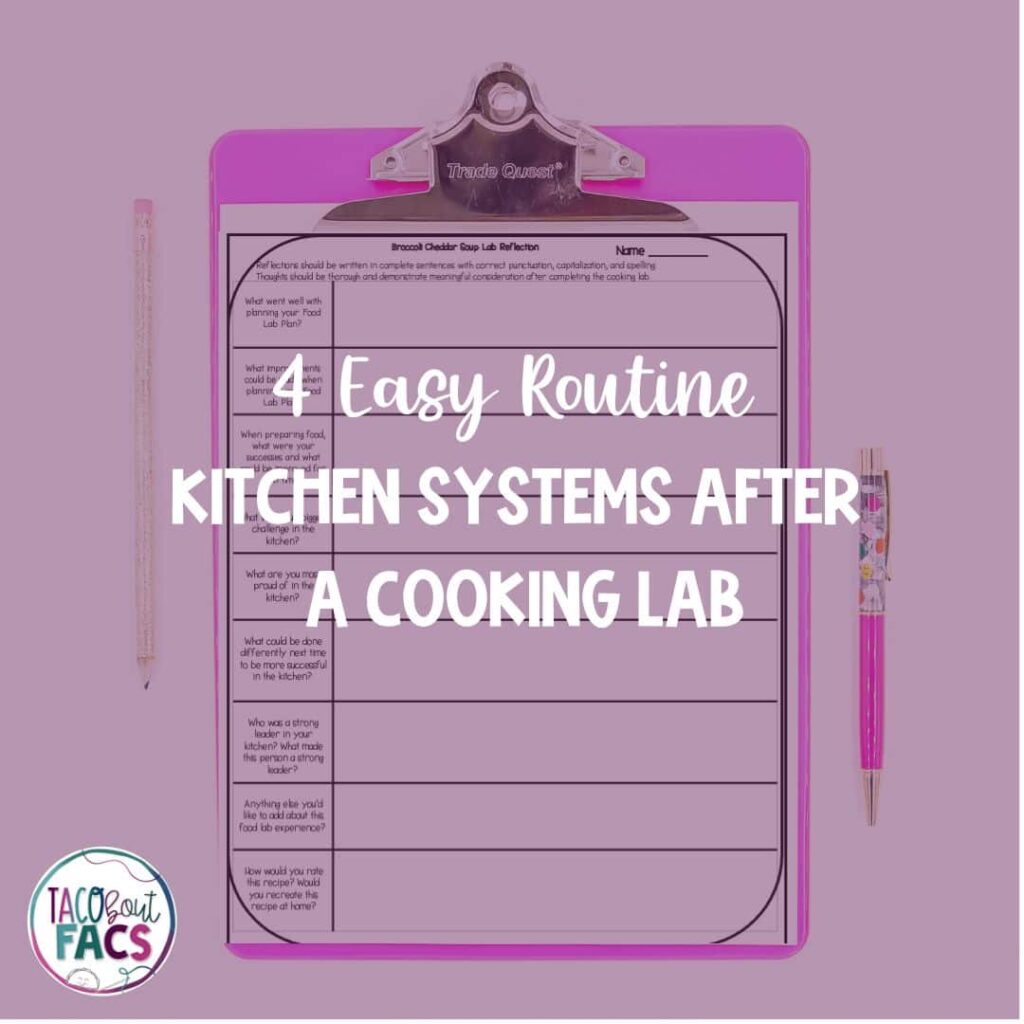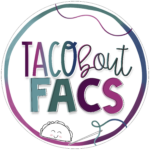The cooking lab is over, but this can also be where new learning can occur. Just because the lab finished, doesn’t mean you can’t have strong systems in place to continue learning.
I love a good cooking lab day, but I also really enjoy the reflection piece.
It might seem easier to move on and prepare for the next lab or fill in with a new lesson. However, I encourage you to develop a strong routine for reflection to help your students grow.
Here are 4 easy and routine classroom systems to implement AFTER a cooking lab.
Expectations for right after the lab
Clearly define your expectations after a cooking lab if students find themselves with some free time.
Not too many labs finish early enough for students to have free time. My classroom is two classrooms combined, which means there is a classroom side and a kitchen side.
On those rare occasions it does happen, or during standardized testing block schedule weeks, students clearly know they should be seated when they get to the classroom side after a lab.
These expectations are discussed before entering the lab, written on the daily agenda slide, and can result in losing points if they need “babysitting”.

The time on the classroom side after a lab is usually very short, but don’t leave it up to students to decide how this time is spent. Clear behavior expectations make everyone’s life a little easier.
Cooking lab reflection and digital cookbook
The day after a lab is always a reflection day. Creating a 3 day routine for each lab helps students know the routine.
The reflection is posted through the district’s LMS, Canvas, but I also provide paper copies for those students who don’t have a charged Chromebook.

I have found it is easier to adjust my system of a digital reflection to increase the number of completed assignments. It’s a minor inconvenience on my end because not having a charged Chromebook or saving what’s left of their charge for a math test later, etc.
The reflection allows students to praise a group member who did really well or “tattle” on one who drove them crazy. It’s not often I read something that I didn’t already notice during the cooking lab, but it is a good reminder for students to share the good, bad, and ugly.
It’s not always easy, but I do require students write in complete sentences when reflecting.
Students also complete a digital cookbook. It is near to see students in FACS 2 have a large collection of recipes we have completed in both FACS 1 and 2 through their digital cookbook.
Guest judge feedback
Part of the “agreement” of being a guest judge is returning the feedback form by the next morning. Most are well trained and return the form the day of the lab.
The reason for this is because students are eager to hear their feedback.
Students usually ask to hear the feedback from the other hours and especially hear about any mishaps or low remarks.

Sharing guest judge feedback provides many learning opportunities. For example, students misread the guest judge order for a teacher during the omelet lab. She’s allergic to pork and was served ham. Thankfully she noticed, but this was a great lesson about working in the restaurant business and serving a food allergy.
Another time two 7th grade students served the wrong 8th grade teacher. There are two 8th grade teachers with the same first initial and same last name in the same hallway. They were also given the room number when they left to serve the judge, but got confused.
A great opportunity to talk about serving the wrong table in a restaurant and how they could problem-solve in this type of situation.
Discussions
Talking through situations that came up during the cooking lab or serving others can be a great discussion piece.
The discussion piece is a great time to talk about real-life situations. One example was trying a new sandwich shop and asking the guy taking orders if he had tried something and what he would recommend. He responded that he hadn’t tried anything. In each class, we talked about ways we could better answer when asked this question.
Talking through these types of scenarios is helpful for our students and practicing will only help our students in the service industry.
Creating clear and consistent routines before, during, and after cooking labs will only increase student success.
If, and when, you notice a routine isn’t as concise as it needs to be. Or if a new problem seems to arise, it’s perfectly acceptable to tweak or add new routines.
Our students thrive on strongly built routines and structure. These kind of expectations also set our students up for success when getting a job.
If your cooking lab ends with the lab, I would highly recommend adding in a routine to complete a reflection piece, which nicely rounds out each cooking lab.


